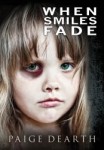

March 31 – April 6: “Do characters speak to you?”
 In a recent article in the Huffington Post, author Karen Dionne elaborated about how characters speak to some authors, to the point that it is almost like taking a dictation. Does this happen to you? What kind of characters do this and describe the process? This week ITW Members Connie Di Marco, Colin Campbell and Paige Dearth will weigh in on whether characters speak to them.
In a recent article in the Huffington Post, author Karen Dionne elaborated about how characters speak to some authors, to the point that it is almost like taking a dictation. Does this happen to you? What kind of characters do this and describe the process? This week ITW Members Connie Di Marco, Colin Campbell and Paige Dearth will weigh in on whether characters speak to them.
~~~~~
 Ex-policeman. Ex-soldier. International tennis player. And full-time crime novelist. Colin Campbell is a retired police officer in West Yorkshire, having tackled crime in one of the UK’s busiest cities for 30 years. He is the author of UK crime novels, Blue Knight White Cross and Northern Ex, and US thrillers Jamaica Plain and Montecito Heights featuring rogue Yorkshire cop Jim Grant. He counts Lee Child and Matt Hilton among his fans.
Ex-policeman. Ex-soldier. International tennis player. And full-time crime novelist. Colin Campbell is a retired police officer in West Yorkshire, having tackled crime in one of the UK’s busiest cities for 30 years. He is the author of UK crime novels, Blue Knight White Cross and Northern Ex, and US thrillers Jamaica Plain and Montecito Heights featuring rogue Yorkshire cop Jim Grant. He counts Lee Child and Matt Hilton among his fans.
 Connie di Marco, writing as Connie Archer, is the national bestselling author of the soup lover’s mystery series from Berkley Prime Crime: A Spoonful of Murder, A Broth of Betrayal and A Roux of Revenge. She has appeared in numerous television and film roles under her professional name, and has been a mystery and thriller devotée for as long as she can remember. She lives in Los Angeles with her family.
Connie di Marco, writing as Connie Archer, is the national bestselling author of the soup lover’s mystery series from Berkley Prime Crime: A Spoonful of Murder, A Broth of Betrayal and A Roux of Revenge. She has appeared in numerous television and film roles under her professional name, and has been a mystery and thriller devotée for as long as she can remember. She lives in Los Angeles with her family.
 Paige Dearth was a victim of child rape and spent her early years yearning desperately for a better life. Living through the fear and isolation that marked her youth, she found a way of coping with the trauma of her past and the angst that scarred her present: she developed the ability to dream up stories grounded in reality that would prove cathartic for her and provide her with a creative outlet. Paige’s novels are a fine balance between what lives on in her imagination and the evil that lurks in the real world.
Paige Dearth was a victim of child rape and spent her early years yearning desperately for a better life. Living through the fear and isolation that marked her youth, she found a way of coping with the trauma of her past and the angst that scarred her present: she developed the ability to dream up stories grounded in reality that would prove cathartic for her and provide her with a creative outlet. Paige’s novels are a fine balance between what lives on in her imagination and the evil that lurks in the real world.
- LAST GIRL MISSING with K.L. Murphy - July 25, 2024
- CHILD OF DUST with Yigal Zur - July 25, 2024
- THE RAVENWOOD CONSPIRACY with Michael Siverling - July 19, 2024
